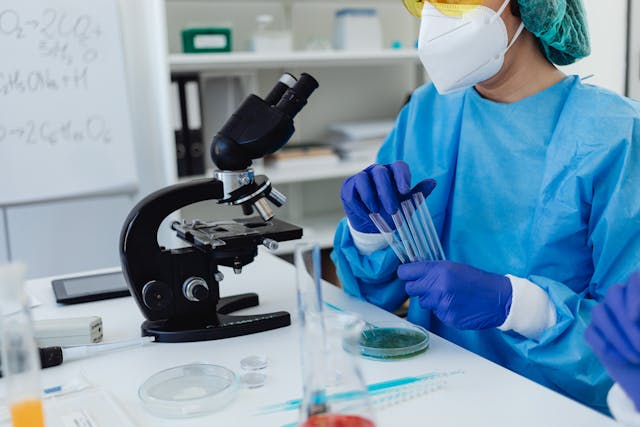When a doctor prescribes a biologic—like a monoclonal antibody—the story of that medicine starts long before the clinic. It begins with a single cell in a lab, chosen and nurtured to make the therapy reliably, safely, and at scale. Getting that “starter” cell line right is not just a technical milestone; it’s one of the quiet safety checks that protects patients down the line. That’s why modern cell line development platforms have moved from nice-to-have tools to essential infrastructure in biopharma.
Why the starting cell matters so much
Regulators expect therapeutic proteins to come from a stable, well-characterized cell substrate. In practice, that means documenting the cell line’s origin, controlling how it’s banked and expanded, and proving that the production line traces back to a single, well-behaved progenitor. The international ICH Q5D guideline is explicit here: for recombinant products, the cell substrate is the transfected cell “cloned from a single cell progenitor.” That lineage—from one cell to a master and working cell bank—is a core quality and safety safeguard.
European guidance also ties product quality to the cell line you choose. The EMA’s monoclonal antibody guideline spells out expectations for using a stable monoclonal cell line and links the production process, viral safety measures, and analytical characterization to that cell substrate choice. In plain terms: if you can control the cell, you can better control the medicine.
Speed without cutting corners
Safety isn’t only about avoiding errors; it’s also about getting effective medicines to families faster. The longer it takes to build a high-producer cell line, the longer patients wait. Modern systems compress timelines by parallelizing clone growth and screening, surfacing the most promising candidates early, and automating routine culture tasks. That time saved can be re-invested in deeper characterization—glycosylation profiles, stability checks, impurity tracking—so when a lead clone advances, it’s not a gamble. Again, the EMA’s quality framework emphasizes thorough characterization and process validation; platforms make it feasible to do more of that work earlier.
Where to see it in action
If you want a concrete example of how all these pieces come together, explore cell line development platforms that integrate single-cell cloning, imaging, culture, titer screening, and clone tracking in one enclosed workstation. The point isn’t just convenience; it’s end-to-end traceability that supports the safety story you must tell—from single cell to master bank to clinical supply.
From manual steps to closed, data-rich workflows
Traditionally, building a production cell line was a patchwork of manual cloning, plate imaging, note-taking, and slow screening. It worked—but it invited variability. Today’s platforms bundle those steps into a connected pipeline: single-cell isolation with proof of clonality, automated culture and feeding, early titer measurement, and data capture that follows each clone from the first image to scale-up. That shift matters because it reduces the chances of mixing cells, missing a contamination event, or losing the evidence trail you need for audits and submissions. The result is a cleaner safety case and fewer costly do-overs.
How platforms raise the safety bar
First, they help you prove the cell line came from one cell. High-content imaging at the moment of dispense (and over time) creates a visual record you can replay—evidence regulators and quality teams actually want to see when you claim “monoclonality.” Second, they harden aseptic technique. Enclosed environments, standardized liquid classes, and fewer open transfers cut contamination routes that can jeopardize a batch. Third, they keep a continuous, queryable record—who handled what, when, under which conditions—so deviations are visible and correctable before they become patient-facing problems. All three map directly to the expectations in ICH Q5D and the EMA guideline for consistent, traceable manufacturing from a known cell source.
What quality and regulatory teams love about these systems
They create audit-ready data by default. Instead of chasing screenshots and spreadsheets, reviewers can follow a clone’s “resume” across experiments and assays. They also align development reality with regulatory language. When a submission cites ICH Q5D for cell banking and characterization, or references the EMA monoclonal antibody guideline for production and control strategies, the platform’s logs and images serve as tangible evidence that the lab has met those expectations, step by step. That’s confidence you can carry into inspections and tech transfers.
What this means for families on the other end of the pipeline
It’s easy to forget that behind every vial is a cell line that must behave the same way, week after week, site after site. Platforms that make clonality demonstrable, aseptic handling consistent, and data traceable reduce the risks of variability that can change a medicine’s profile or slow a critical batch. They also help companies pivot faster when science moves—new targets, new modalities—without sacrificing the guardrails that keep products safe. In a world where therapies are more complex and expectations are higher, that combination of rigor and speed is exactly what patients deserve.
The takeaway
Cell line development used to be a craft; now it’s becoming a disciplined, digital process. That evolution doesn’t just serve scientists—it serves patients. By anchoring development to a single, well-documented cell progenitor (as ICH Q5D requires) and tying production quality back to that choice (as the EMA guideline expects), today’s platforms turn a critical early step into a reliable foundation for safer medicines. The journey from lab to life will always be complex, but with cell line development platforms doing the meticulous work upfront, we can deliver therapies that families can trust—and do it faster than ever.




